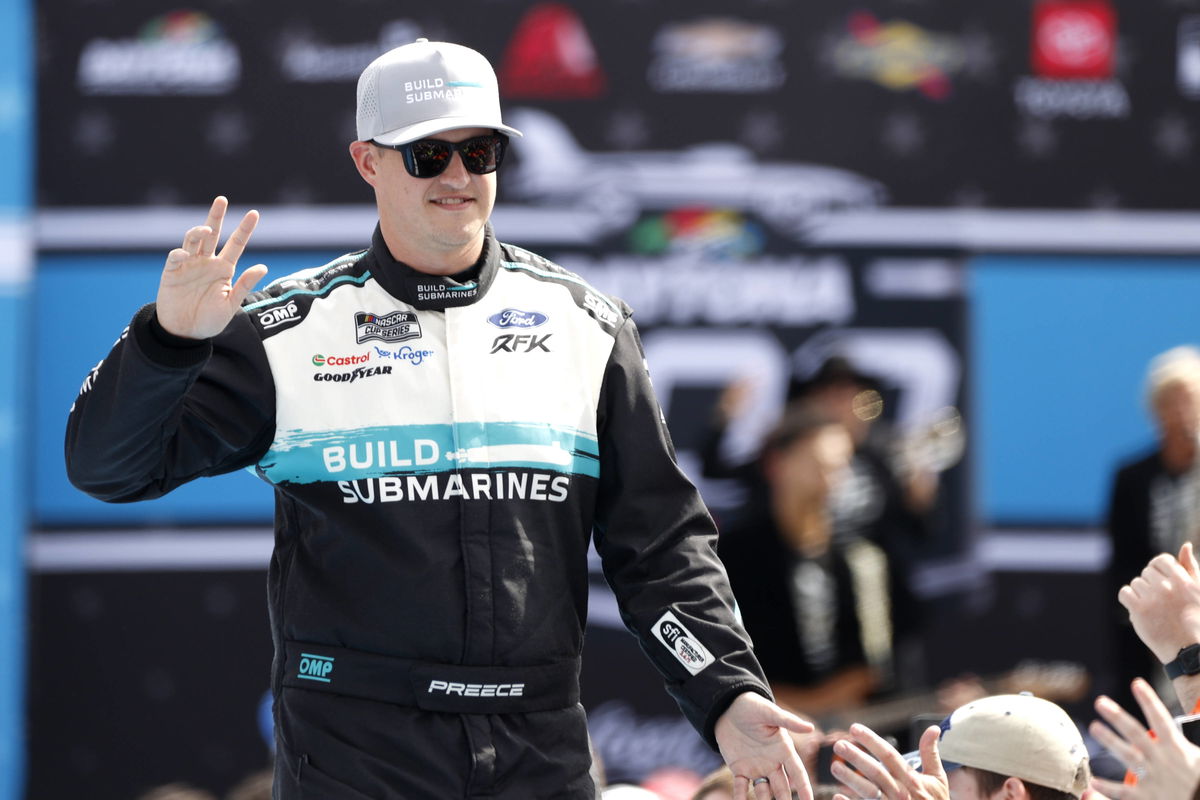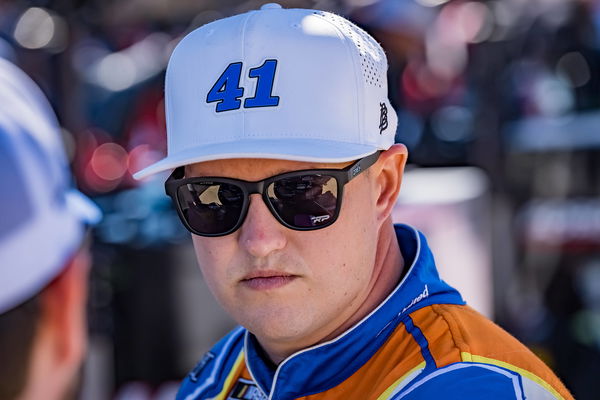
Imago
DAYTONA BEACH, FL – FEBRUARY 16: Ryan Preece 60 RFK Racing Buildsubmarines.com Ford shakes hands prior to the running of the NASCAR, Motorsport, USA Cup Series Daytona 500 on February 16, 2025 at Daytona International Speedway in Daytona Beach, FL. Photo by Jeff Robinson/Icon Sportswire AUTO: FEB 16 NASCAR Cup Series DAYTONA 500 EDITORIAL USE ONLY Icon25021616009500

Imago
DAYTONA BEACH, FL – FEBRUARY 16: Ryan Preece 60 RFK Racing Buildsubmarines.com Ford shakes hands prior to the running of the NASCAR, Motorsport, USA Cup Series Daytona 500 on February 16, 2025 at Daytona International Speedway in Daytona Beach, FL. Photo by Jeff Robinson/Icon Sportswire AUTO: FEB 16 NASCAR Cup Series DAYTONA 500 EDITORIAL USE ONLY Icon25021616009500
When the Next Gen car was introduced in 2022, it had a rear diffuser and underbody aero pieces to boost downforce and stability. The wind-tunnel tests said that these parts improved grip. But some fans and insiders argued that they actually worsened short-track racing, and this is how the “wind-tunnel narrative” was created. The talk around it grew from the debate over whether removing the diffuser would have a dramatic impact on how the Next Gen car behaves.
Watch What’s Trending Now!
But once the data from the test came together, it became clear that the real deciding factor wasn’t the aero changes at all. The biggest influence was something else, and RFK Racing’s Ryan Preece had the practical answer to it.
ADVERTISEMENT
Preece breaks the diffuser myth
On the Dale Jr Download, when Dale Jr. asked, “What does the car feel like when you drive it without the diffuser?”, Ryan Preece didn’t beat around the bush: “I don’t notice any difference. … If you look at a wind tunnel data … I don’t feel that.” He’s pushing back hard on one of the common critiques, that removing the diffuser during testing or setup massively kills downforce. To him, the numbers on paper don’t match what he feels behind the wheel.
Preece went on to back that up with some serious lap-speed proof: “I went 14.7 seconds around Bristol Motor Speedway … depending on the tire … I can go 14-70s to 15-00s for a 30-lap run … there were other tires … I’d be only able to go … 15-50s and drop off to 16-20.” Those are strong timings, especially at a place like Bristol, where tire grip and falloff matter more than pure aero. His comment shows he’s not just testing, he’s evaluating performance under real race-like conditions.
He finally addressed where he thinks the real challenge is: “A lot of it is just a combination … initially when this car came out … a lot of drivers were saying that … there’s too much tire … too big a tire. … What I thought … was … the tires were very durable … we needed to soften them up … and have them go through a transition.” Preece is saying that managing tire behavior, not just maximizing aerodynamic grip, is the key. And that, in his view, has more impact on long runs than what the wind tunnel might indicate.
ADVERTISEMENT

Imago
NASCAR, Motorsport, USA October 12 NASCAR Cup Series 2024: Bank of America ROVAL 400 NASCAR Cup Series driver, RYAN PREECE 41, prepares to practice for the Bank of America ROVAL 400 at Charlotte Motor Speedway Road Course in Concord, NC. LicenseRM 22353824 Copyright: xZoonar.com/GrindstonexMediaxGroup/ASPInc/WalterxGxArcexSrx 22353824
He didn’t stop there. Preece continued, “As this year progressed … Martinsville … there was a massive fall off … guys were struggling … there was definitely a balance. … We don’t want to be blowing tires … a lot of that is on air pressures … trying to get the most performance out of the tire … but … there’ll be really good racing.” He’s laying out a nuanced view: yes, the tire is big, but it’s resilient, and with the right setup, it can deliver strong, competitive runs without collapsing too early.
ADVERTISEMENT
Ryan Preece’s perspective isn’t just theoretical. His recent comments echo what he’s said in other interviews, especially around tire development. He’s been saying it for four years.
Even Denny Hamlin on his podcast had mentioned how removing the diffuser is not a good idea, “It was never aero. So, I think if anything I think that downforce that they took off of the cars would continue to not help the tire. It just made — it’s not wearing the tire. You got to have downforce to wear a tire down. And as we took downforce off, while I agree with that main sentiment, it’s, just it doesn’t wear tires.”
Hamlin’s point is clear that reducing downforce will not make the tires wear out, and this will not create competition in the field. So the focus should not just be on aero, but on managing the tire development.
ADVERTISEMENT
Depending on how hard you abuse that tire, the bigger the price you pay. That’s a pretty clear signal that, in Preece’s mind, and in his driving, the tire game is where the fight really is, not just downforce or aerodynamics. The same guy who spends every waking minute chasing tenths is now ready to flip the switch and chase something else for a minute.
Preece’s quiet off-season plans
After a solid year driving the No. 60 Ford for RFK Racing and finishing 18th in points, Ryan Preece is hitting pause. He told Dale Jr. he’ll probably run a couple modified shows during Speedweeks just to keep the attack mindset sharp, then head to Pensacola for the Snowball Derby weekend. After that, it’s time to breathe.
ADVERTISEMENT
“I’m trying to relax,” he said. “As a racer, I’ve been non-stop racing, always thinking about racing for so many years. And for me, it’s hard to shut that switch off because it’s been turned on for many years.” So the plan is simple: head home to Connecticut, spend real time with his two-year-old daughter and newborn son, and just be dad for a little while.
After years of living track to track, the guy who can’t feel a diffuser change is finally permitting himself to feel something else — family, quiet, and a little distance before the 2026 grind starts all over again.
ADVERTISEMENT
ADVERTISEMENT
ADVERTISEMENT

